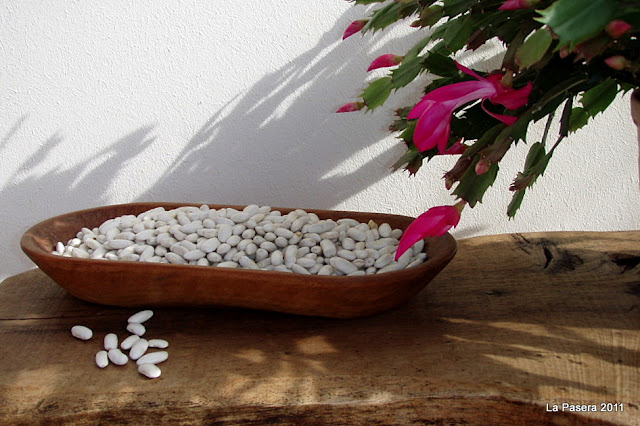There is a never ending stream of things to do here at La Pasera, not much different to most people's lives I suppose. The tasks may differ but the need to keep things moving along, no matter where you are, is ever present. There are some jobs that we put off and put off for no real reason other than it either comes lower down on the list of priorities or else it is a job we are not particularly looking forward to.
We completed some much needed building preparation on the drive way this week which has been hanging around now for far too long. Over winter, we aim to make headway with the hard landscaping and drainage needed at the side of the house.
We managed a couple of walks in areas we haven't explored before which was great. Good weather prevailed which made it even more enjoyable.
The garden is nearly ready for winter with just a few more grasses and shrubs to trim and prune. We have levelled some areas of lawn and plan to re-think the wild flower areas for next spring. The vegetables are producing well with a great crop of leeks, swede, celeriac, beetroot, celery, cabbage and broccoli.
Luis has just tied the winter lettuce which will help to tenderise and sweeten the inner leaves. Peas are busy sprouting in half drainpipes and showing lots of new growth in this typically unseasonal warmth.
Lots of cooking going on as usual with making our own fast food - 40 spicy bean burgers for the freezer, bread supplies replenished and the last of the marrows and the first glut of leeks made into soups both to eat fresh and to freeze. We'll feature the recipe for the spicy bean burgers in a later post.
Luis has been hard at work completing work to restore the cane work on an old bergere three piece suite with hall chairs. Good news this week also as he accepts his first mosaic commission since the exhibition.
The cats are looking bulkier since putting on their winter coats and making the most of the warmer weather although there does not seem to be as much rodent activity as they would like. They make their way back to the house in the cool early evening knowing full well that a warm log fire awaits.
All in all, a busy week with everything else that is happening but never-the-less satisfying. A few more jobs ticked off the never ending list.
We completed some much needed building preparation on the drive way this week which has been hanging around now for far too long. Over winter, we aim to make headway with the hard landscaping and drainage needed at the side of the house.
We managed a couple of walks in areas we haven't explored before which was great. Good weather prevailed which made it even more enjoyable.
The garden is nearly ready for winter with just a few more grasses and shrubs to trim and prune. We have levelled some areas of lawn and plan to re-think the wild flower areas for next spring. The vegetables are producing well with a great crop of leeks, swede, celeriac, beetroot, celery, cabbage and broccoli.
Luis has just tied the winter lettuce which will help to tenderise and sweeten the inner leaves. Peas are busy sprouting in half drainpipes and showing lots of new growth in this typically unseasonal warmth.
Lots of cooking going on as usual with making our own fast food - 40 spicy bean burgers for the freezer, bread supplies replenished and the last of the marrows and the first glut of leeks made into soups both to eat fresh and to freeze. We'll feature the recipe for the spicy bean burgers in a later post.
Luis has been hard at work completing work to restore the cane work on an old bergere three piece suite with hall chairs. Good news this week also as he accepts his first mosaic commission since the exhibition.
The cats are looking bulkier since putting on their winter coats and making the most of the warmer weather although there does not seem to be as much rodent activity as they would like. They make their way back to the house in the cool early evening knowing full well that a warm log fire awaits.
All in all, a busy week with everything else that is happening but never-the-less satisfying. A few more jobs ticked off the never ending list.


























